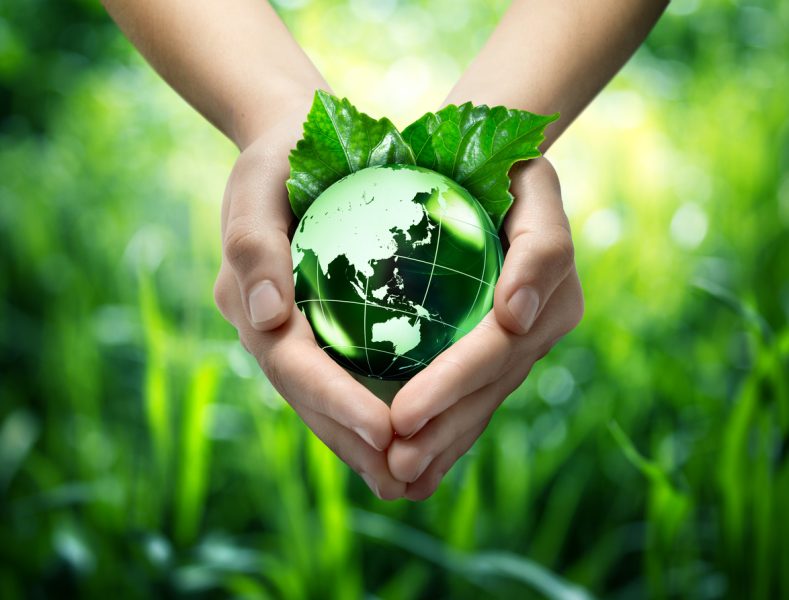
A slew of 'green' and 'clean energy' initiatives in Union Budget 2023

Besides Amrit Kaal, a word that figured prominently in finance minister Nirmala Sitharaman’s Union Budget 2023-24 speech was ‘green’, and how India is moving forward to achieve its net-zero carbon emission by 2070. Green and clean energy weaved its way into all sectors of the Indian economy.
Firstly, “Green growth” itself was listed as one of the seven priorities or Saptarishis of the Union Budget. Last year, in the 2022-2023 budget too, Sitharaman had deployed words like clean energy, energy transition, clean environment and ‘climate action’ while presenting the budget. But, she had slashed budgetary allocation to bodies involved in tackling basic environmental problems like air pollution. Last year’s budget, also did not have much to meet the targets to reduce carbon emissions by 2030.
But, this budget seems tied in with this green growth “priority”, and as Sitharaman stressed they are implementing many programmes for green fuel, green energy, green farming, green mobility, green buildings, and green equipment, and policies for efficient use of energy across various economic sectors. The government’s green growth efforts are aimed at reducing carbon intensity of the economy and providing for large-scale green job opportunities.
Here are some of the initiatives under ‘Green Growth’, which is aimed at moving forward to achieve India’s five point climate goal:
National Green Hydrogen Mission: In this Union budget 2023-24, the FM announced an outlay of ₹19,700 crore for the recently-launched National Green Hydrogen Mission, which she said will facilitate the transition of the economy to low carbon intensity, reduce dependence on fossil fuel imports and make the “country assume technology and market leadership in this sunrise sector”. The target is to generate an annual production of 5 MMT (million metric tonnes) of green hydrogen by 2030 under this scheme.
Energy transition: The budget also provided for ₹35,000 crore outlay for energy security, energy transition and net zero objectives and energy security to be implemented by the Union ministry of petroleum and natural gas.
This budget comes at a time when we are falling behind on our first green goal of installing 175 GW of renewable capacity by 2022. At the end of December 2022, according to the Ministry of New and Renewable Energy, we are at 120 GW. India has an ambition to add 500 GW of non-fossil fuel capacity by 2030. With announcement of the green hydrogen mission, that target just went up by another 125 GW.
Also read: Budget 2023-24: Centre hurtles along infra track with 33% capex hike
EVs get a boost
Last year, the Centre’s electric vehicle policy ‘Scheme for Faster Adoption and Manufacturing of (Hybrid and) Electric Vehicle in India’ saw a big boost from Rs 800 crore last year to Rs 2,908.28 crore. This year, the FM has announced the setting up of Battery Energy Storage Systems with capacity of 4,000 MWH, which will be supported with Viability Gap Funding.
The budget also provided for custom duty exemption to imports of capital goods and machinery required for manufacture of lithium ion cells used in EV batteries. According to experts, customs exemption on capital goods and machinery for lithium batteries will reduce the per kilowatt our cost of batteries and thus accelerate EV adoption in both personal and commercial segments.
In her budget speech, Nirmala Sitharaman also announced the plan to allocate adequate funds to scrap old vehicles and ambulances which will help to create more EVS.
Pankaj Sharma, co-founder and director, Log9 Materials, a bengaluru-based nanotechnology start-up said in a statement, “The government’s decision to extend the concessional duty on lithium-ion cells for batteries for another year is definitely welcoming as it would sustain the ongoing momentum within the Indian EV sector. Considering EV batteries account for approximately upto 60 per cent of the EV cost, this relaxation will make electric vehicles more affordable and hence enhance the EV adoption rate.”
Greening agriculture
There’s a host of green initiatives in the agriculture sector. Atmanirbhar Clean Plant Programme with an outlay of ₹2200 crore is to be launched to boost availability of disease-free, quality planting material for high value horticultural crops, said the FM. The Centre will also facilitate one crore farmers to adopt natural farming over the next three years. For this purpose, 10,000 Bio-Input Resource Centres are to be set-up, to create a national level distributed micro-fertilizer and pesticide manufacturing network.
The PM Programme for Restoration, Awareness, Nourishment and Amelioration of Mother Earth (PM-PRANAM) is to be launched to incentivise states and Union Territories to promote alternative fertilisers and balanced use of chemical fertilisers.
Also read: Budget 2023 lays foundation for developed India: PM Modi
Waste to wealth
Under the Green growth platform, the FM announced that 500 new ‘waste to wealth’ plants under GOBARdhan (Galvanizing Organic BioAgro Resources Dhan) scheme, these will include 200 compressed biogas (CBG) plants, including 75 plants in urban areas, and 300 community or cluster-based plants at total investment of Rs 10,000 crore. This is to promote circular economy at a total investment of ₹10,000 crore.
While 5 per cent compressed biogas mandate to be introduced for all organisations marketing natural and bio gas.
She also informed that the Inter-state transmission system for evacuation and grid integration of 13 GW renewable energy from Ladakh will be constructed with investment of ₹20,700 crore, including central support of ₹8,300 crore.
Mangrove Initiative and optimal use of wetlands
This budget has something for mangroves as well. The ‘Mangrove Initiative for Shoreline Habitats & Tangible Incomes’, MISHTI, is to be taken up for mangrove plantation along the coastline and on salt pan lands, through convergence between MGNREGS, CAMPA Fund and other sources.
Amrit Dharohar scheme to be implemented over the next three years to encourage optimal use of wetlands, enhance bio-diversity.
To encourage a more environmentally conscious lifestyle, a Green Credit Programme is to be notified under the Environment (Protection) Act to incentivise and mobilise additional resources for environmentally sustainable and responsive actions.

